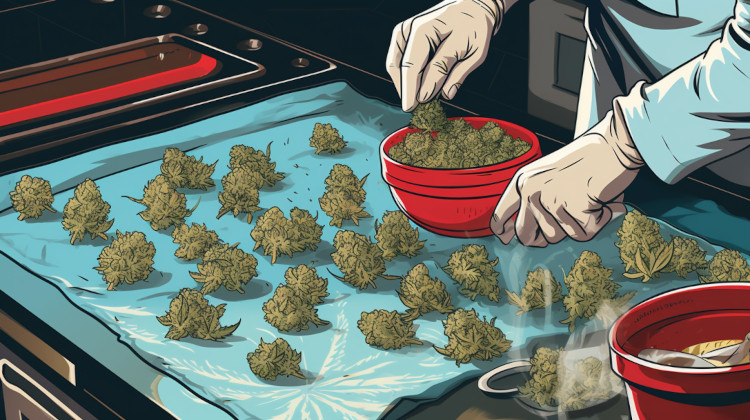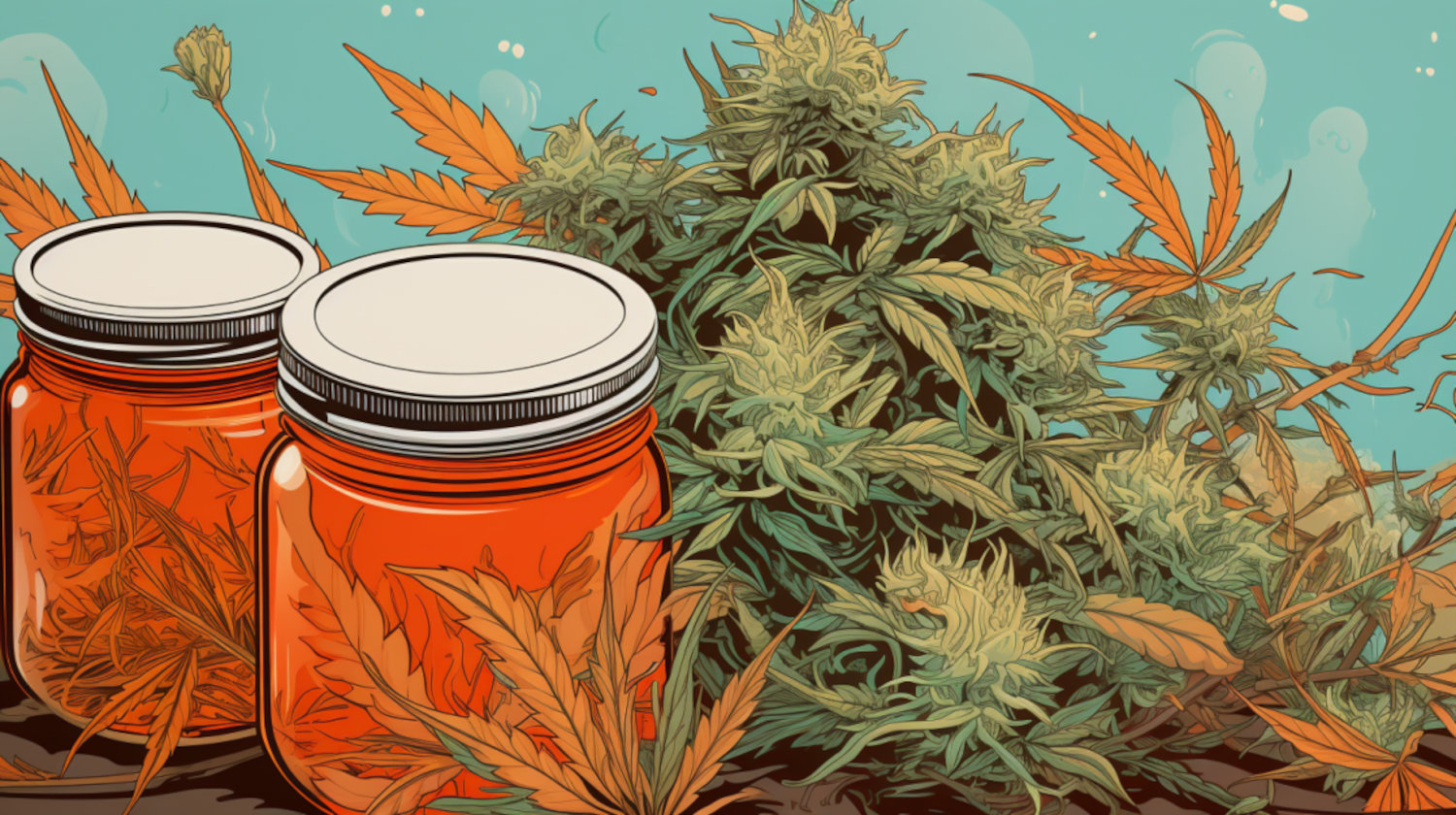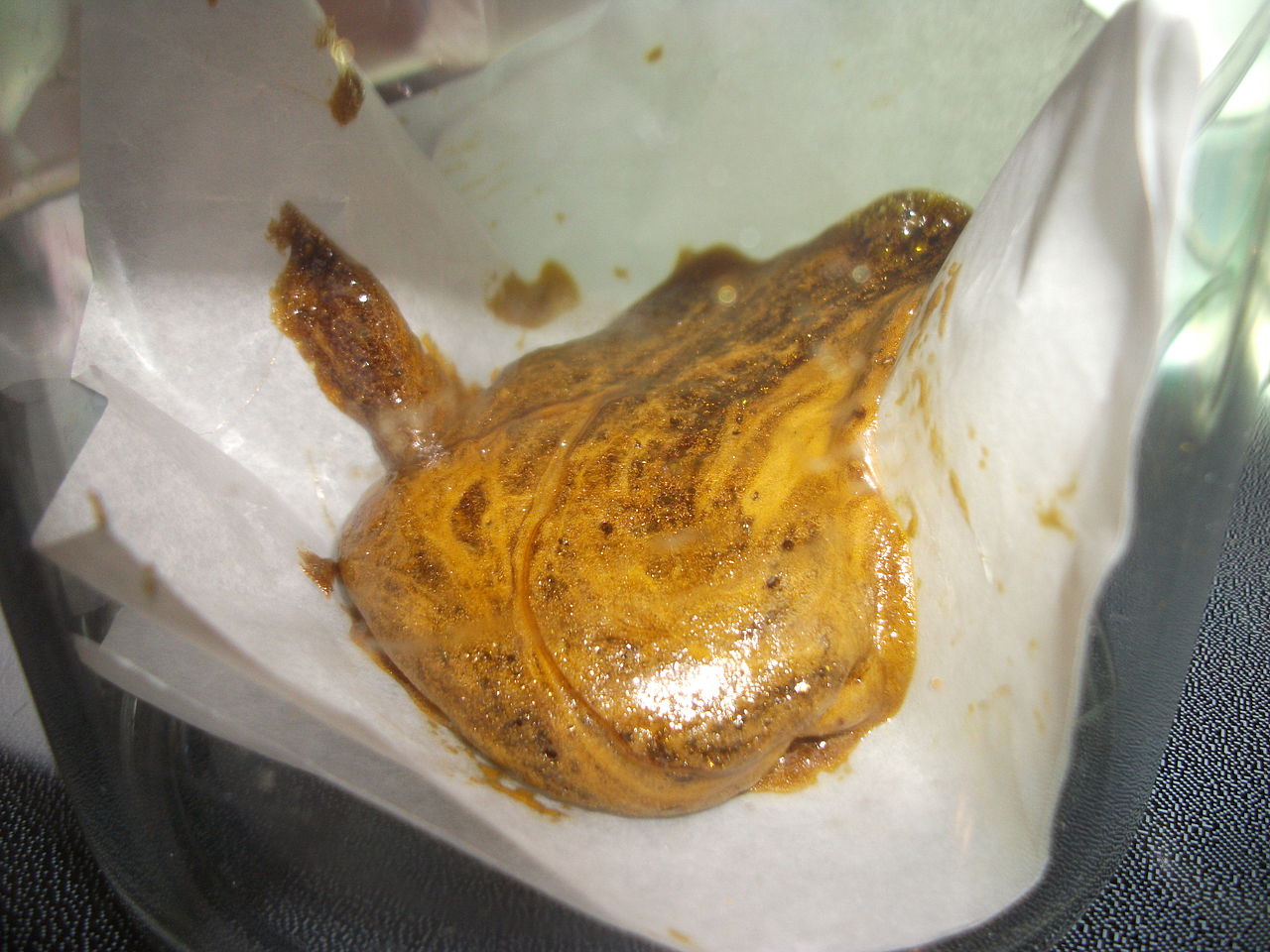There are a handful of different ways to consume cannabis. Common smoking methods like joints, bongs, or dabs are the most popular, but edibles, topicals, and oils have become increasingly more common.
The term 'cannaoil' combines the words' cannabis oil' and refers to a few different products. At a basic level, it is the concentrated oil extracted from the cannabis plant. It comes in many forms, sometimes with different textures, and can have various cannabinoid concentrations. These oils can be purchased over the counter and at dispensaries, but some versions can be relatively easy to make at home.
Cannabis oil can include
- High-THC Cannabis oil
- High-THC cannabis-derived CBD Oil
- Hemp-derived CBD Oil
- Rick Simpson Oil
- And a range of other options
What is Cannabis Oil?
Cannabis oil is a broad term encompassing several products that use different methods to extract cannabinoids and other molecules from the plant. Depending on the process, these extractions can be used as is and categorized as concentrates. These concentrates are usually a more solid material and are consumed through smoking. However, the term 'oil' is sometimes used to describe the concentrates (like distillate) put into vape cartridges.
While this is not incorrect, for this article, we will use the term cannabis oil to describe liquid tinctures.
Tinctures come in a range of concentrations, from high-THC to CBD isolates. Full spectrum options offer these cannabinoids and more, while broad spectrum will encompass cannabinoids other than THC. These tinctures can be hemp-derived and available almost anywhere in the US or cannabis-derived and only available in states that have enacted adult use or medical cannabis legislation.
Cannabis tinctures can be made using an oil base or alcohol base.
The process starts with dry flower cannabis material that must be decarbed to activate the cannabinoids, similar to the edible-making process. Then, it can be infused into the oil or alcohol and, afterward, strained and removed. Once it's made, cannabis oil can be used in a variety of ways.
What is Cannabis Oil Used For?

Cannabis oil is a versatile product; it can be consumed as-is and is a great way to get a precise dosage. If consumed as a sublingual – dispensed under the tongue – the onset time is usually within 15 minutes. The effects can last up to several hours. However, tinctures and oils can also be used to make edibles or topicals.
Cannaoils are super easy to make at home and are a great way to stretch the use of your cannabis stash. If stored correctly and depending on the materials used, they have a shelf life of up to a few years.
The benefits of the exact cannabis oil you use will depend on what it is infused with and what cannabinoids and other cannabis molecules it has in concentration. THC, CBD, and a range of other cannabinoids found in the plant have been studied over the years for their potential therapeutic health benefits. These include being anti-inflammatory, anti-microbial, and anti-anxiety, just to name a few.
Cannabis Oil vs Hemp Oil vs CBD Oil: What are the Differences?
Cannabis terms and language have evolved, including the term' oil.' You'll often see 'oil' products categorized as tinctures, even though tinctures are traditionally alcohol-based. Tinctures are commonly called "cannabis oil," "hemp oil," and "CBD oil," and it's not uncommon to wonder what the difference between hemp oil and CBD oil is.
The difference is the concentration of cannabinoids infused in them and the type of cannabis it was derived from. CBD and other minor cannabinoid products can be derived from high-THC cannabis (federally illegal) or low-THC hemp (federally legal). It is important to note that hemp seed oil does not contain cannabinoids and is made by pressing the hemp plant seeds. Many CBD oils can contain hemp seed oil as an infusion base.
Hemp seed oil is intended to be used for cooking or infusion purposes, while cannabis and hemp oil or CBD oil are intended to be used more "medicinally."
How to Use Cannabis Oil

Cannabis oil is a versatile product because it can be utilized and consumed in a few different ways.
- As a sublingual – The most common way to consume alcohol tinctures and cannaoils is dispensed under the tongue for 10-15 seconds. The cannabinoids are absorbed via the mucosal membrane in the mouth – under the tongue, inside the cheeks, and on the gums. You should feel the effects within 10-15 minutes, and they can last several hours. Tinctures made with alcohol provide better absorption for the cannabinoids.
- As an edible – Oils with a base of coconut oil, olive oil, or another cooking oil base can be infused into other foods. Most often, they are put into baked goods or candies, but you can really put them into any food product you desire.
- As a topical – Using cannabis as a topical is a great way to treat spots on the body that have pain or inflammation; you can simply apply the oil directly to your skin or add a few drops of cannabis oil to your lotion. Applying cannabis topicals will not cause any intoxicating effects. Alcohol-based cannabis tinctures should not be used in topicals as they may dry out the skin.
- As a capsule – You can add cannabis oil into capsules, which will induce an effect similar to edibles. You may also be able to find capsules over the counter.
All of these methods allow you to get your precise dosage of cannabis. To calculate how much each dose of your homemade cannabis oil or other infused products is, you can use our easy edible dosage calculator.
How to Make Cannabis Oil
Making cannabis oil at home is one way to save money and extend the use of your cannabis material. Most people will not use their best flower for tinctures or oil but will choose material that may have gotten old or is not worth consuming through smoking.
You can follow several different methods and recipes to make your cannaoil. A basic cannabis oil is simple to make at home. Below is a basic recipe.
You will need the following ingredients and materials:
- Cannabis flower
- Grinder
- Baking sheet
- Parchment paper
- An MCT oil – coconut or olive is most commonly used
- A saucepan
- Glass container
- Cheesecloth
- Food thermometer
Then you can do the following
- Grind your cannabis flower, and preheat the oven to 250 degrees Fahrenheit.
- Line the baking sheet with parchment paper, and sprinkle your ground cannabis onto the sheet.
- Place the sheet in the oven and bake for 25 - 30 minutes.
- Once the cannabis is finished baking, you can pull it out of the oven and allow it to cool.
- Once it's cooled, place a saucepan on the stove, pour in your oil of choice, and warm it up. You'll wait for the oil to be between 130 and 150 degrees Fahrenheit.
- Pour the decarbed flower directly into the oil. Stirring occasionally, let it sit in the oil for 2 to 3 hours.
- After the infusion is over, let the oil cool.
- Once the oil cools, place a cheesecloth over the bowl and strain the cannabis flower.
- The cannaoil can be placed into a glass container and stored in a cool, dark place.
The cannabis oil you make at home can be used as a sublingual, topical, or infused into any food you choose. The potency of your final product will be determined by the cannabinoid concentration of the dry flower you used and its ratio to the amount of oil you used. No matter what the strength of the oil is, you can use a dropper-like tool to make sure you only consume your desired amount.
How long the effects last depends on how you take the oil. Sublingual and edibles may cause intoxicating effects, depending on the cannabinoid concentration, and can last several hours. Topicals will only spot treat areas and won't have any intoxicating effects, but their effect on pain and inflammation may only last a few hours.

Is cannaoil legal?
Hemp-derived cannabis oil with less than 0.3% THC has been legal in the US since the passing of the Farm Bill in 2018. High-THC cannabis-derived oil is only legal in states where adult use or medical legislation has been passed.
Is there commercial ready-made cannaoil?
Yes, you can find pre-made cannabis oil in various health food markets, online, or in dispensaries. Always make sure you purchase from a reputable retailer and that you can access any testing information through the certificate of analysis (COA).
How long does cannaoil last?
Depending on the base oil and how it's stored, cannaoil can last anywhere from 1 to 2 years. Any cannabis oil that has become thick, murky, or developed a foul odor and taste should be disposed of.
How do I store cannaoil?
Cannabinoids can degrade when exposed to heat, light, or air, so it's best to store your cannabis oil in a cool, dark place – preferably in an opaque container. Some people prefer to place their products in the fridge, but it will depend on the other ingredients in the oil.
The information in this article and any included images or charts are for educational purposes only. This information is neither a substitute for, nor does it replace, professional legal advice or medical advice, diagnosis, or treatment. If you have any concerns or questions about laws, regulations, or your health, you should always consult with an attorney, physician or other licensed professional.




